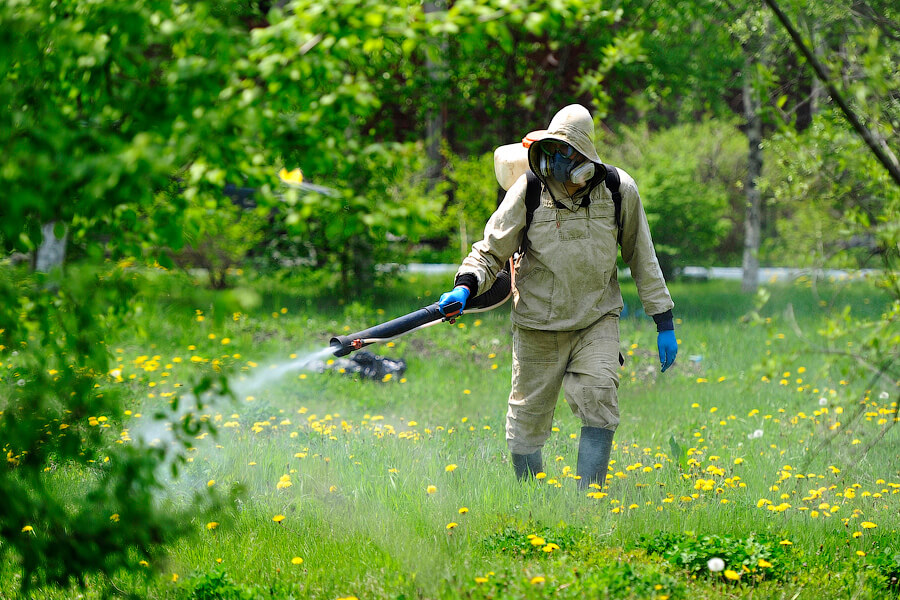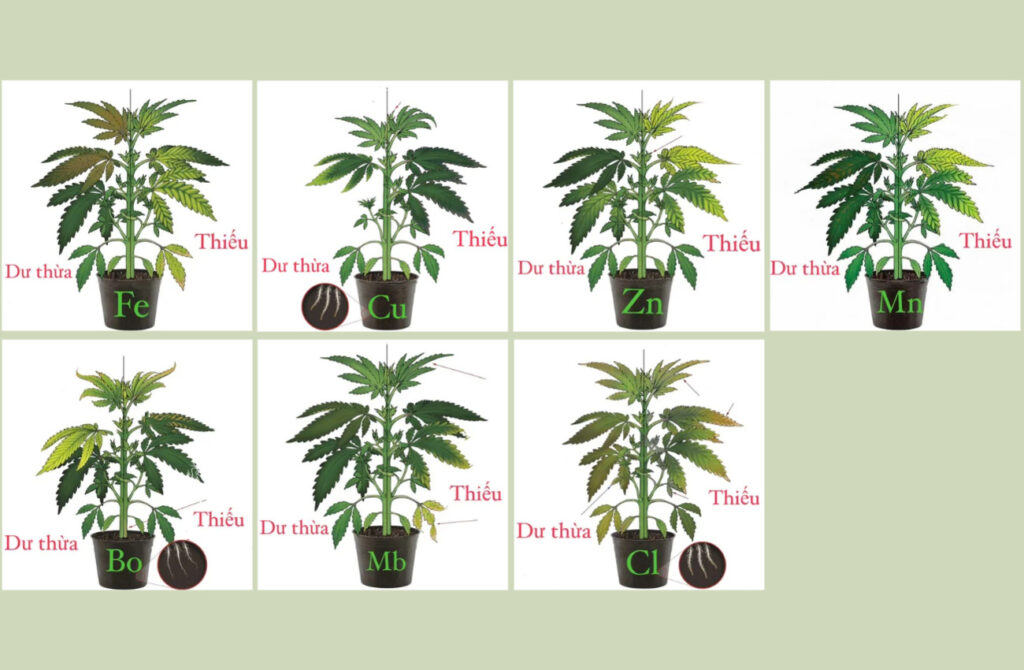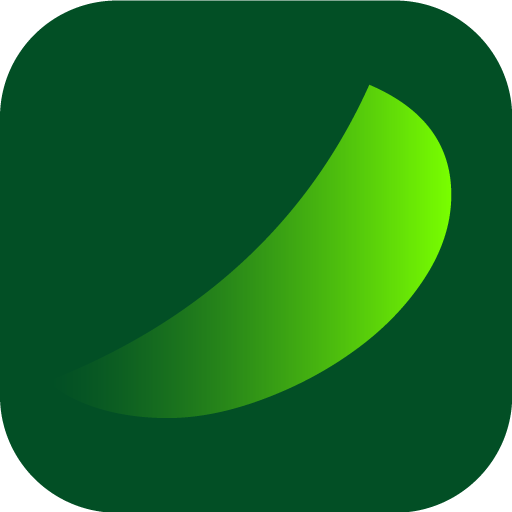In the agricultural world, nutrition plays a vital role in ensuring healthy, high-yielding, and high-quality plant growth. Understanding each nutrient and its role helps farmers and plant growers know how to provide and balance nutrition to avoid nutrient deficiencies or excesses.
Benefits of providing adequate nutrition to plants

- Increase productivity and quality of agricultural products: Plants provided with adequate nutrients will have high productivity and product quality, meeting market demand.
- Increase resistance: Nutrients such as potassium and calcium help plants resist pests and harsh environmental conditions.
- Sustainable Development: Providing proper nutrition, combined with effective farming helps maintain soil fertility and reduce environmental impact.
Effective ways to supplement nutrients for plants
- Soil improvement before planting

Before planting, loosen the soil and apply basal fertilizer to help the plant grow. Fertilize perennial plants when they stop flowering, and fertilize short-term plants in holes or rows. Phosphate fertilizer should be applied 1-2 weeks in advance to improve poor soil.
- Fertilize during plant growth

When the plant is growing, adding organic fertilizer helps maintain nutrients and increase productivity. Depending on the growing season and weather, adjust the fertilizer dosage accordingly.
- Watering with nutrient rich water

In addition to direct fertilization, fertilizer can be mixed with water for irrigation, suitable for densely planted plants. Ensure a lower fertilizer dose to avoid overloading the plants, especially for plants grown in areas with poor drainage.
Main nutrients:
Macronutrients:

Protein (N): This is an important nutrient that helps plants grow leaves and maintain their green color thanks to the chlorophyll structure. Plants absorb nitrogen in the form of NO3- and NH4+.
Nitrogen deficiency or excess both have negative effects on plants: excess makes leaves dark green, stems weak, and water absorption capacity reduced; deficiency makes leaves yellow, plants stunted, and yields low. For plants to grow well, the NH4+/NO3- ratio should be maintained at 1/1.
Phosphorus: is a nutrient that promotes root growth, helps plants flower and produce quality fruit, absorbed in the form of H2PO4– and HPO42-.
Excess phosphorus causes thin, poorly structured new leaves, interveinal chlorosis, brown leaf tips, burnt leaf edges and dead roots. Phosphorus deficiency causes slow growth, weakness, purple-gray petioles, all-green leaves with yellow or brown spots, curled leaves and falling off. Maintaining a balanced phosphorus level helps plants grow well and limits malnutrition.
Potassium (K): Potassium (K) helps plants to be strong, drought resistant, and resistant to pests and diseases and is absorbed in the form of K+.
Excess potassium causes interveinal chlorosis, leaf margin burn, leaf curl, root death and low pH. Potassium deficiency causes pale, yellow-brown leaves, burnt edges, excessive branching, poor flowering and low yield. Balanced potassium is needed for healthy plant growth and high yield.
Secondary Nutrients

Magnesium (Mg): Magnesium is a major component of chlorophyll, which helps plants photosynthesize and maintain their green color. Magnesium is easily leached out in sandy soils, and can be supplemented with Dolomite lime or MgCl2 sprayed on leaves.
Magnesium deficiency causes weak plants, yellowing of old leaves between the veins, brown spots, dry leaves, curling and falling off. Excess magnesium causes stunted plants, dark green leaves, and signs of salt toxicity. Maintaining adequate magnesium levels helps plants grow healthily.
Sulfur (S): is an essential nutrient for protein and enzyme synthesis, absorbed by plants in the form of SO4²-.
In the Mekong Delta, soils are usually rich in sulfur, but when lacking, young leaves turn yellow, plants grow slowly, leaf veins turn yellow, leaves burn at the tips and curl down. Excess sulfur makes plants smaller, leaves are uniformly dark green, leaf tips and edges change color, and become harder. Maintaining the right sulfur level helps plants grow optimally.
Calcium (Ca): is an important nutrient that helps form cell structure and supports the development of shoots and root tips.
Calcium deficiency causes the lower leaves to deform, curl, appear yellow-brown spots, slow flower growth, root rot, stunted plants, and reduced productivity. Excess calcium causes leaves to wilt slightly, stunted plants, and hinders the absorption of substances such as potassium, iron, magnesium, and manganese. Maintaining a balanced calcium level helps plants grow healthily.
Micronutrients

Iron (Fe) helps synthesize chlorophyll and keep leaves green. Iron deficiency causes young leaves to turn yellow but the veins remain green, usually due to soil nutrient imbalance or excess macronutrients.
Copper (Cu) important for the development of young shoots. When lacking, leaves turn yellow, young shoots are small and weak, easily damaged.
Zinc (Zn) Helps leaves and stems stay healthy. Zinc deficiency causes young leaves to be small, grow thickly and may turn yellow, and plants to grow poorly. Foliar zinc spraying is an effective solution when soil is deficient.
Manganese (Mn) Maintain stable metabolism. Manganese deficiency causes young leaves to appear streaked and yellow in the flesh, while the veins remain green.
Boron (Bo) Essential for pollination and growth. Boron deficiency causes young shoots to die and plants to fail to produce fruit or seeds, reducing yields.
Molybdenum (Mo) helps synthesize metabolic enzymes. Lack of molybdenum, young leaves lose their green color, plants grow poorly.
Chlorine (Cl) Helps balance water and nutrients in plants. Lack of chlorine weakens plants, affecting roots and leaves. Need to add the right dosage to avoid affecting other nutrients.
The importance of nutritional balance
Providing adequate nutrients is an important factor for healthy plant growth. In addition, maintaining soil fertility, balancing organic and inorganic fertilizers, and encouraging life in the soil, also contribute to sustainable plant growth. It is necessary to establish a reasonable fertilization regime and create a favorable environment for good plant growth.
Tips for Plant Nutrient Management
Plant nutrition management requires understanding of nutrition and applying science to farming:
- Periodic soil testing: Measure pH and nutrient content for timely and accurate supplementation.
- Fertilizer balance: Combine chemical and organic fertilizers and foliar micronutrient supplementation to protect the environment.
- Plant Health Monitoring: Watch for signs of deficiency and supplement nutrition during critical stages.
Providing adequate and balanced nutrients helps plants stay healthy, develop sustainably, improve product quality and meet market demand.
Additionally, nutrients influence the choice and composition of growing media. Learn more about growing media:
Editor: Hang Ngo





